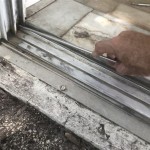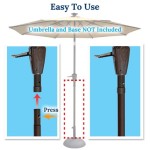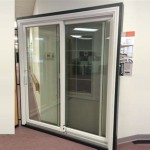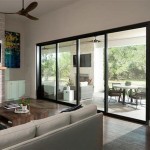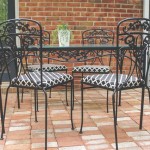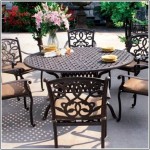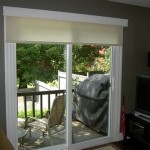Patio Furniture Without Cushions: Durability, Style, and Maintenance
Patio furniture without cushions represents a significant shift in outdoor living design, prioritizing durability, low maintenance, and contemporary aesthetics. Traditionally, patio setups have relied heavily on cushioned seating for comfort. However, advancements in materials and design have made furniture without cushions an increasingly popular choice, offering a robust and stylish alternative for homeowners and hospitality businesses alike.
The absence of cushions inherently changes the considerations in the purchasing process. Material selection, ergonomic design, and overall weather resistance become paramount. While the perceived initial comfort might seem lower than cushioned options, well-designed furniture without cushions can deliver significant comfort through contoured seats and thoughtful construction. This article explores the key aspects of patio furniture without cushions, focusing on the benefits, materials, design considerations, and maintenance practices that contribute to its growing appeal.
Benefits of Cushionless Patio Furniture
The advantages of opting for patio furniture without cushions extend beyond mere aesthetics. Several practical and economic benefits contribute to its increasing adoption. These advantages include superior weather resistance, reduced maintenance requirements, and enhanced durability, making it a cost-effective investment in the long run.
One of the most significant benefits is the inherent weather resistance. Cushions, particularly those made from absorbent fabrics, are susceptible to water damage, mold, and mildew. Exposure to rain, humidity, and even excessive sunlight can degrade the fabric and filling, requiring frequent cleaning, repairs, or even replacement. Furniture without cushions eliminates this concern. Materials like aluminum, teak, and high-density polyethylene (HDPE) are naturally resistant to moisture, UV radiation, and temperature fluctuations. This resistance translates to a longer lifespan and reduced upkeep, particularly in climates with harsh weather conditions.
Maintenance is another key advantage. Cushions require regular cleaning to remove dirt, stains, and allergens. They may also require periodic professional cleaning or replacement of the filling. Furniture without cushions, on the other hand, typically requires only occasional wiping down with soap and water. This minimal maintenance translates to significant time and cost savings, particularly for commercial establishments with large outdoor seating areas. The ease of cleaning also makes it a more hygienic option, as there are fewer crevices for dirt and bacteria to accumulate.
Durability is also greatly improved. Cushions are subject to wear and tear from constant use. The fabric can fade, tear, or become stained, and the filling can compress or lose its shape. Furniture without cushions is typically constructed from robust materials designed to withstand heavy use and environmental stressors. This durability makes it a worthwhile investment, as it can last for many years with proper care. The sturdy construction also makes it suitable for high-traffic areas, such as restaurants and hotels, where furniture is subjected to constant use.
Material Options for Cushionless Designs
The choice of materials is critical when selecting patio furniture without cushions, as it directly impacts comfort, durability, and aesthetics. Different materials offer varying degrees of weather resistance, maintenance requirements, and price points. Common materials used in constructing cushionless patio furniture include aluminum, teak, wicker (both natural and synthetic), and HDPE.
Aluminum is a popular choice due to its lightweight nature, rust resistance, and affordability. Powder-coated aluminum is particularly suitable for outdoor use, as the coating provides an extra layer of protection against corrosion and fading. Aluminum furniture is easy to move around and requires minimal maintenance, making it a practical option for both residential and commercial settings. However, aluminum can become hot to the touch in direct sunlight, so it is often paired with other materials like teak or synthetic wicker for added comfort and visual appeal.
Teak is a hardwood renowned for its natural beauty, durability, and resistance to rot and insects. It contains natural oils that protect it from the elements, making it ideal for outdoor use. Teak furniture develops a beautiful silver-gray patina over time if left untreated, adding to its character. While teak is more expensive than aluminum, its longevity and timeless aesthetic make it a worthwhile investment. Regular cleaning with soap and water is usually sufficient to maintain its appearance, and occasional oiling can help preserve its original color.
Wicker, both natural and synthetic, offers a classic and versatile look for patio furniture. Natural wicker is made from plant fibers like rattan or willow and requires more maintenance than synthetic options. It needs to be protected from moisture and sunlight to prevent damage and fading. Synthetic wicker, on the other hand, is made from plastic resins like polyethylene or PVC. It is highly resistant to weather, UV radiation, and mold, making it a durable and low-maintenance choice. Synthetic wicker is also available in a wide range of colors and styles, allowing for greater design flexibility.
HDPE (High-Density Polyethylene) is a recycled plastic material that is becoming increasingly popular for outdoor furniture. It is highly durable, weather-resistant, and requires minimal maintenance. HDPE furniture is also resistant to fading, cracking, and splintering, making it a safe and long-lasting option. It is available in a variety of colors and styles, and its eco-friendly nature appeals to environmentally conscious consumers. HDPE furniture can be easily cleaned with soap and water, and it is resistant to most stains and chemicals.
Design Considerations for Comfort and Style
While the absence of cushions might initially raise concerns about comfort, thoughtful design can address these concerns and create outdoor furniture that is both stylish and comfortable. Ergonomic design, contoured seats, and the incorporation of other materials can significantly enhance the seating experience. Paying attention to these design elements ensures that the furniture is not only aesthetically pleasing but also provides adequate support and comfort for extended periods.
Ergonomic design principles play a crucial role in creating comfortable seating without cushions. This involves carefully considering the height, depth, and angle of the seat, as well as the placement and shape of the backrest. A well-designed seat should provide adequate support for the lower back and promote good posture. The seat depth should be sufficient to allow for comfortable leg positioning, and the height should be appropriate for the average user. A slightly contoured seat can also improve comfort by distributing weight more evenly. The angle of the backrest is also important, as it can affect the level of support provided to the upper back and shoulders.
Contoured seats are another key design element that can enhance comfort. By molding the seat to fit the natural curves of the body, manufacturers can create furniture that is more comfortable to sit on for extended periods. Contoured seats can be found in a variety of materials, including plastic, wood, and metal. The specific shape and design of the contour will vary depending on the style of the furniture and the target audience. However, the basic principle remains the same: to provide a more comfortable and supportive seating experience.
The integration of other materials can also enhance both comfort and style. For example, aluminum frames can be combined with teak or synthetic wicker seats and backrests to create furniture that is both durable and visually appealing. The warmth and texture of wood or wicker can soften the coldness of metal, creating a more inviting atmosphere. Similarly, HDPE can be molded into a variety of shapes and textures to create furniture that is both comfortable and stylish. The use of different colors and finishes can also add visual interest and create a more personalized look.
Beyond physical comfort, aesthetic considerations are equally important. The furniture should complement the overall style of the outdoor space and reflect the homeowner's or business's personal taste. Clean lines, minimalist designs, and neutral colors are popular choices for contemporary patios. However, more traditional designs with ornate details and warmer colors can also be incorporated to create a more classic and inviting atmosphere. The choice of materials, finishes, and accessories should all work together to create a cohesive and harmonious look.
In summary, patio furniture without cushions offers a durable, low-maintenance, and stylish alternative to traditional cushioned options. By carefully considering the materials, design, and maintenance, one can create an outdoor space that is both comfortable and aesthetically pleasing. The benefits of weather resistance, reduced maintenance, and enhanced durability make it a worthwhile investment for a lasting outdoor experience.

Outdoor Furniture With Built In Protection Blog Wicker Home Patio

No Cushions Included Patio Furniture At Com

51 Outdoor Patio Furniture Selections For Stylish Sunny Spaces
:max_bytes(150000):strip_icc()/NanticokeWicker_Rattan2-PersonSeatingGroupwithCushions-fefe6ac78bd245bfa836293359c48eb9.jpeg?strip=all)
18 Wicker Patio Furniture Pieces For Every Budget And Style

Resin Wicker Patio Furniture Crate Barrel

Woodard Reunion Outdoor Wicker Patio Set Wd Set1

Rattan Wicker Patio Furniture 4 Piece Outdoor Conversation Set With Storage Ottoman All Weather Sectional Sofa Gray Cushions And Table For Backyard Porch Garden Poolside Com

Outdoor Cushions Patio Furniture The Home Depot

Update Your Outdoor Furniture Without Breaking The Bank Tanya Foster

Fun And Functional Outdoor Furniture Ideas Forbes Home
Related Posts

